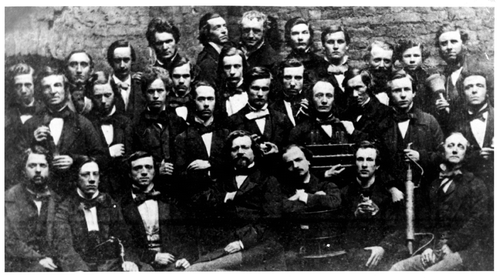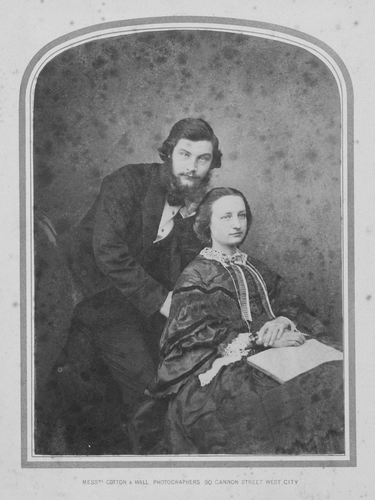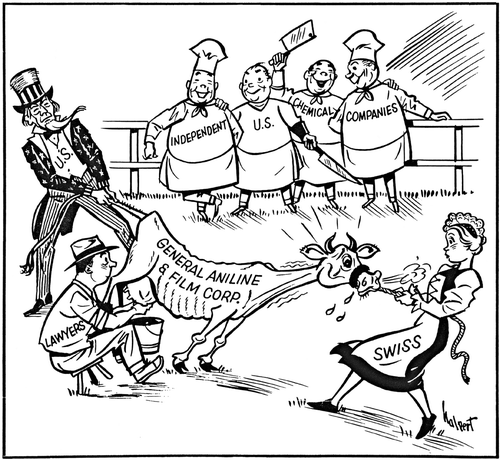This issue of History and Technology marks the discovery in London 150 years ago by a teenaged chemist of a purple dyestuff made from coal‐tar products. That discovery was to trigger a remarkable era of industrial expansion based on organic chemistry that, along with developments in applications of electricity, has often been called the second industrial revolution. The young man was William Henry Perkin (1838–1907), an assistant of the German chemist August Wilhelm Hofmann at the Royal College of Chemistry. In 1859, Perkin's product became known as mauve, mainly as a result of its popularity among fashion conscious ladies in London and Paris. The story of the discovery and where it led, particularly the transfer of technology from England to Germany, has been told many times, and is also briefly reviewed in the following pages. However, while this special issue, arising from a conference held at the Edelstein Center, Hebrew University, in April 2005, does look back at the momentous discovery, its focus on the dye industry represents breaks from the approaches that followed the publication of John J. Beer's pioneering The Emergence of the German Dye Industry, in 1959.
The first two articles force a reappraisal of the commemorative events marking the discovery of mauve, particularly the jubilee celebration that took place in London during July 1906. First Peter Morris of the Science Museum, London, and recipient of the 2006 Edelstein (formerly Dexter) Award, takes a look at the provenance of a sample of crystalline mauve dyestuff claimed to have been prepared from Perkin's original batch. In doing so, Morris draws together many strands, including a survey of when the synthetic dye industry was first recognized to be a quite new industry, one based on scientific investigation. After all, until that was the case, why bother to save a sample for posterity, and why bother to celebrate? Second, Anthony Travis of the Edelstein Center at the Hebrew University, considers the involvement of Raphael Meldola, president of the Chemical Society of London, in the 1906 events. This provides an opportunity to underscore how his crusade for improved scientific education in England was based on the decline of that nation's dye industry after 1870. This is aided by a comparison of Meldola's short career in the English dye industry, and the demise of his former employer, with the growth of the BASF company, under the technical leadership of the chemist Heinrich Caro. Moreover, the jubilee appears to have resonated more in the USA than in England, perhaps reflecting the greater appreciation of the practical application of science in the New World, even if it could not boast of a viable dye industry.
When the centenary of the synthetic dye industry was marked in 1956, the main event, lasting one week, took place in New York, and completely overshadowed the celebrations in London, that were noted mainly for ICI's announcement of the first fibre‐reactive dyes, those which form chemical bonds with the fabric. It was now the USA that had the largest dye‐making industry in the world, in part because of the collapse of Germany in 1945, but also because of new needs. From dyes there evolved sulfa drugs and industrial research programmes that fostered quite novel inventions, particularly polymers. Long before World War II, the Germans had recognized that it was the American market for chemicals that had the greatest growth potential. The Bayer company's response was to enter into a partnership with the struggling Grasselli Chemical concern. Following the formation of I. G. Farben in 1925, its interests in the USA, including those of Bayer, were merged and Grasselli was soon absorbed into the German behemoth's US operations. These became known as the General Aniline Works, and from 1939 as the General Aniline & Film Corporation. Not only was I. G. Farben a leading dye manufacturer in the USA, but for a time it was the leader. However, it fell foul of the US government that suspected involvement in a Nazi conspiracy.
Figure 1 August Wilhelm Hofmann, Staff, and Students at the Royal College of Chemistry, London, probably 1855. William Henry Perkin is in the back row, fifth from right. Edelstein Collection.

The fascinating story of General Aniline & Film, its predecessors and successors, has been almost completely neglected by historians, though it has often featured in books and articles that focus on the connection with Germany in the 1930s. These sources, sometimes for understandable reasons, often lack any semblance of rigour and dispassion. This makes the two following articles in this special issue of particular significance. Declan O'Reilly, Edelstein Center Senior Fellow, considers the economic and political dimensions of General Aniline's history, until its seizure as the property of an enemy nation by the US government in 1942. His in‐depth study of archival sources enables an unraveling of the complex web of commercial intrigue that represented not so much a Nazi conspiracy as attempts to hide financial dealings from the Third Reich's tax offices and protect assets, particularly patents, in the event of war. Robert Baptista (ex‐Bayer US) and Travis then deal with the technology of General Aniline. The fine detail is important, because it demonstrates effectively how technology transfer took place from Germany in the 1930s and was adapted to American conditions, particularly in the 1940s. Moreover, the post‐1950s history of General Aniline parallels that of other dye‐making firms in the USA, as they diversified into new areas and responded to the Kennedy Round of trade negotiations and environmental concerns. What had still been the largest dye‐making industry on earth in 1970 had almost disappeared a decade later. One outcome is the somewhat muted sense of celebration in 2006, apart from events organized by the Royal Society of Chemistry, and the award of the American Division of the Society of Chemical Industry's Perkin Medal at Chemical Heritage Foundation, Philadelphia, in September. William Perkin was the first recipient of the medal, in 1906, on the occasion of his visit to New York, and since that time the medal has represented the most prestigious award for invention and innovation in the chemical and allied industries. Meantime this special issue of History and Technology will remind us of how the synthetic dye industry played prominent roles in the still‐relevant debates over education and competitive advantage, state security and the geopolitical factors that impact on the supply of strategic chemicals.

